Those of you who have ever launched anything know just how precious the hours on launch day are. Yesterday, author Dan Heath took time out of his launch day to spend some time with me and answered some questions about his new book, Decisive: How to Make Better Choices in Life and Work, co-authored with his brother Chip.
I asked Dan a few questions about decision-making, including what decisions lead him and his brother to write this book.
ER: Thanks for taking the time out on launch day. What was the hardest decision you had to make while writing the book?
Dan Heath: I think the hardest decision was “which book to write,” honestly. After Chip and I finished up
Switch, we had several ideas about what was next. Rather than agonizing over which was the right one to start with, we thought we’d just get started with all three and see, based on how the research developed, which one grabbed us. About six months in, we decided the decision-making topic was the one we were both most passionate about and the one where we could offer the most practical advice. And, actually, we talk about a similar concept in
Decisive: the importance of “multitracking” your options when you have a difficult decision. We were inspired to do it ourselves because we’d just come across the research, which says that if you consider multiple options at once, it can yield better decisions. The reason is that you’re learning about multiple alternatives, along with their strengths and weaknesses, simultaneously. And not only that, but some researchers have found that it even speeds up your decision-making.
ER: That’s something I see a lot with startups and yet I think it’s actually sort of counterintuitive that doing this extra work—considering more options—will help you make a decision faster. How is that possible that you are doing more work, yet it’s faster?
DH: Exactly, we feel like we don’t have time to consider more options. It’s more work, and it’s slower. But the counterpoint comes from a researcher named Kathleen Eisenhardt at Stanford, who did a study of Silicon Valley firms and found that the firms that considered more options were actually faster for three basic reasons. The first is: When you consider multiple things simultaneously, you’re actually learning a lot about the shape of the problem—the important factors involved—and that knowledge makes you more confident and quicker to decide. The second piece is: When you consider multiple options, it depoliticizes the choice. When you have one option on the table, and the choice is “do we do this or not,” you get two camps fighting each other. You spend a lot of time bickering and arguing. Versus when you have multiple options, you can approach them more objectively and consider their strengths and weaknesses a bit more honestly. The third piece is maybe the most obvious: when you consider multiple options, you have a built-in fallback. So, if you go with Option A and for some reason it fizzles out, you’ve already got Option B teed up. But if Option A was the only thing you considered, you might exert a lot of energy trying to rescue or redeem it, and maybe try to make it work even to the point of absurdity. So that’s the case for considering multiple options.
ER: It sounds a lot like the decision that a lot of startups struggle with, which is trying to figure out if they should pivot to a new strategy or persevere with what they’re working on. I know you guys write about PayPal, for one, and there are really a lot of other companies that end up doing something quite different than what they started on. I was really struck thinking about the framework that you guys propose in the book, and that really is the psychological counterpart to this: the pivot decision is often one that has to be made by a team under a lot of stress, under adverse conditions where it seems like every psychological bias in the book seems to get in the way of doing it well.
DH: Right. In fact, the story we cite in the book about PayPal speaks exactly to that. What some of your readers may not know is that PayPal originally was designed as a way to secure financial transactions between PalmPilot users. The founder of PayPal, Max Levchin, had created this brilliant program to do secure transactions through PalmPilots, which is a very difficult thing to do. In fact, their first venture capital investment was actually beamed from PalmPilot to PalmPilot live in a restaurant in the Bay Area. Later, they built a web demo to demonstrate the functionality of the PalmPilot product—the idea was to lure people to the PalmPilot project. Then, to their surprise, the web demo really started to take off, and they started to attract a lot more interest in the web product than the PalmPilot product. Initially, this really frustrated them, because the PalmPilot product was much more technologically advanced. Levchin has this great quote about getting emails from people from this place called “eBay” who wanted to put the PayPal logo on their online payment options, and at first PayPal’s reaction was “no, no, go away!” We don’t want our logo on your owl macramé auction, thanks! But PayPal came to this point where they had to decide: okay, we have 12,000 users on our PalmPilot program and over a million on the online demo. What do we do? So they abandoned the Palm Pilot side.
On the one hand, it seems absurd to call this a “tough decision.” 12,000 users for one product versus over a million for the other! But it makes a ton of sense from the perspective of psychology. There are all these biases that were pulling PayPal toward the model that they started with. One of them is called mere exposure, which is the idea that we get more comfortable with things that we are more familiar with. The PayPal team grew up as a Palm Pilot company. The Palm Pilot was in their bones. It felt more familiar, more natural.
The second bias is loss-aversion. Losses are more painful to us than gains are pleasurable. So if you put yourself in the PayPal founders’ shoes, you start thinking “Yes, we could shift. Yes, there does seem to be a lot of enthusiasm on the web—but, what if we blow it? What if PalmPilots take over the world, and we threw away our advantage? What idiots we’ll look like to sacrifice our early lead for the sake of helping a bunch of flaky eBay sellers.” That IS a tough decision. And these forces are what complicate decisions like this, as you said, for entrepreneurs.
ER: Unfortunately, in the business school cases that get written about these things, things wind up looking really easy in retrospect, so the narratives we have make it seem, sometimes, like the founders must just have been idiots. Why didn’t they just make the obviously correct decision? But when you’re in the moment, it’s a totally different cognitive experience.
DH: Anyone who believes that business cases are the be-all and end-all of business education only needs to consider this fact: for years, Enron cases were a mainstay of the Harvard Business School curriculum. They were so innovative, you see! Then after the meltdown, those cases rather abruptly disappeared.
ER: Ha! A very principled stance. I was thinking about, when you were telling the PayPal story, this great story about Starbucks. People forget that Starbucks began as an Italian copy-cat café called Il Giornale—complete with Italian opera, and waiters with bow-ties. Howard Schultz wouldn’t even allow people to take the coffee to go! Because, you know, a porcelain cup is the only way you should be allowed to have real Italian espresso. But, eventually, they end up buying the Starbucks brand back from its owners and have this company meeting where they have to decide if they should go forward under the brand name ‘Il Giornale’ or Starbucks. And I love the fact that they even had to have a meeting about it!
But when you look at it through the framework you just laid out, they’d been working for years already at the Italian, very differentiated coffee shop concept and they were very invested in it, and you can imagine them feeling like, “What if we end up just being another bland American coffee purveyor and we miss a chance?”
DH: That story is a perfect example of what mars our decision-making so often. You’ve got a bunch of smart, passionate people sitting in a conference room staging all these arguments in their head. But what entrepreneurs have to realize is that the answers are in the world, not in our heads. There are no points for predicting right from inside a conference room. There are only points for getting it right in the real world.
And this is a case where what we talk about in Decisive overlaps very nicely with The Lean Startup because this speaks directly to the philosophy you have. We both talk about Scott Cook at Intuit and his willingness to get out of his head and stop being in the business of trusting his gut. He embraces the philosophy of “leadership by experiment,” which is about giving ideas a chance to prove themselves in the world.
As you write, Intuit runs sometimes up to seventy tests per week. But we can do this same thing with our personal decisions! I’ve talked to people who are agonizing, sometimes for weeks or months, over whether or not they should go back to school for social work or for counseling, and often these people haven’t spent a single day shadowing a social worker or counselor! I think one of the fundamental principles of decision making is that good decisions happen when we get out of our head and start taking information from the real world seriously.
ER: Amen. That is a core belief of everyone in the Lean Startup movement. Another question along these lines that I get a lot is: how do you know when you’ve collected enough information to make a good decision?
DH: That’s a great question. I think there are two gating factors. One is: have you considered enough options? One trap that people fall into is that they make “whether or not” decisions. They consider one alternative really seriously and the decision is “do we do that or not?” That’s a big problem, because adding incremental options really increases your chances for success. So one rule of thumb we talk about in the book is to fall in love twice—make sure you have at least two legitimate options before making your choice. (Don’t apply this to romantic decisions, though.) So, if you’re hiring someone, keep taking applications until you have at least two really good applicants. If you’re house shopping, make sure you keep looking until you have two really good options that you’d feel comfortable living in. That helps stop you from falling into the trap of rationalizing away the faults of your options.
So once you’ve got two or three options, then the question is: Have you gathered enough information from the world to tip you one way or another? And this is where Scott Cook provides a good example. Just run a test of some kind. If you have two or three good options, what kind of experiments can you run to get good, determinative information? Alternatively, you might make a values-based decision. You can ask yourself: which option is truest to your core priority?
For resolving personal decisions, we offer a useful question in the book: What would you tell your best friend to do in this situation?
ER: Yeah, project it onto somebody else.
DH: Exactly. I know that sounds simple. But I’ve had conversations with people who have reported agonizing about a decision for months, and then I’ve asked that question and they’ve had an answer in ten seconds. There’s something profound that happens when we create a little bit of distance by shifting perspectives.
ER: It’s almost ironic because a lot of us believe in a methodology called “net promoter score” in which you ask customers to recommend a product to a friend or colleague, and I’ve always thought of that as exploiting a bug in human psychology. It doesn’t actually predict peoples’ referral behavior very well—it actually predicts how much they like your product in the first place. So they’re projecting themselves on to their friends and colleagues and telling you what they feel. But if you ask them directly, they won’t tell you.
But I want to switch topics here, because one of the things I really like about all of your books is that you organize your ideas around a very simple mnemonic device. Here you have a really nice one for how to think through a decision: WRAP, which stands for:
- Widen your options
- Reality-test your assumptions
- Attain distance before deciding, and
- Prepare to be wrong.
I want to talk about my favorite of these, which is P for Prepare to be wrong. Because that’s the story of my life!
I think people think preparing to be wrong is setting themselves up for some sort of failure, or it’s some sort of self-sabotage.
DH: Yeah it sounds like we’re pitching some kind of defeatism. It’s not that at all actually, though. Psychologists tell us that we tend to be overconfident with our decisions, meaning that we think we know how things are going to turn out, but we’re often wrong. Ask anyone who has filled out an NCAA bracket and they can probably identify with this right now.
ER: Ha! Yes. I even used Nate Silver’s bracket and that didn’t turn out very well.
DH: Yes—and that was a pretty wise decision-making strategy by the way!
But when we talk about “Preparing to be Wrong,” it doesn’t mean that we should be pessimistic or bummed out. What it means is that we need to do a better job of stretching our sense of how the future might unfold. We need to consider positive and negative outcomes. Our minds often know more than we think they do. For instance, there’s a study that asks people to estimate the average box office haul for movies in the 1990’s that featured Angelina Jolie. And they were told to specify a range of box office totals that you believe are 80% certain to contain the true value. So, you and I might think, okay, somewhere between fifty and a hundred million dollars is going to capture that to 80% certainty.
But what they found is that the actual average fell outside of people’s ranges over 60% of the time, rather than the 20% you’d expect (since they were supposed to be 80% certain). People just did a horrible job estimating. But here’s the twist: The researchers did a separate study where they got people to probe for the extremes. They asked: what’s a high value for these Angelia Jolie movies that has only a 10% chance of being exceeded. Or, what’s a low boundary that has only a 10% chance of the number falling below it?
What happens when you stretch peoples’ thinking that way is that they start surfacing new knowledge. They start thinking, “Well hell, Tomb Raider was in the 90’s, wasn’t it?, and that was a huge hit and so that means the average will be skewed up.” For the lower bound, they’ll think, “But wasn’t she in some really strange indie films, and I bet those barely cracked a million bucks and maybe that drags the average down.” And all of a sudden you’re accessing this information that before was ignored or flattened out because we came to this quick conclusion about the average.
And I think the significance of that for entrepreneurs is obvious. Rather than making a prediction, treating the future like it’s a single point, we need to get people to stretch their expectations and begin, as much as possible, to start planning for the spectrum of possible outcomes. That’s preparing to be wrong. We need to start treating our decisions as predictions that could be right or wrong, rather than as a firm conclusion.
ER: Right. In the Lean Startup movement, we’ve been trying to get people to think of something that used to be called “requirements” in business-speak as “hypotheses” instead. They’re beliefs about what might happen. Everything you do is an experiment, whether you admit it or not. You’ll always have—whether you call them this or not—predictions about how things will go, and that’s a great opportunity for learning.
DH: That’s a beautiful sentiment and it dovetails so nicely with what we talk about in the book. People have such a sense of false permanence about decisions. There are some decisions, of course, where commitment is baked-in—marriage, say, or commitment to the armed forces, but those are the exceptions that prove the rule. The vast majority of decisions are nothing more than hypotheses. It’s: I think this going to be right job for me, the right place to live. We’ve got to stop treating our decisions as permanent and instead think of them as provisional. And of course, if you’re willing to make that leap, then it demands something of us. It means that when you make a decision, you’ve got to think about the circumstances under which you’d reconsider. What could you learn in 6 months that would convince you to go a different direction—or, conversely, convince you that it’s a great decision and worth doubling-down on?
ER: Well this sets me up perfectly to take advantage of your expertise and ask a question I’ve been wanting to ask you. One of the recommendations I make in The Lean Startup is that since you know you’re going to have to pivot, you’re gonna fail, you’re gonna make mistakes, you should schedule the pivot meeting in advance. Say, start the company today but in six weeks from today, let’s have a meeting to see if our strategy is still working, so that way it’s not a crisis that we’re having this meeting and in fact it’s perfectly normal. Is that a psychologically-sound recommendation?
DH: Yes. Absolutely. It sounds to me like we sort of wrote the same book with different terminology. We call that same idea in our book a ‘tripwire’—the notion that there’s something in the future that will snap us awake and force us to re-consider the decisions we’re making. The tripwire might be a metric we’re following, or a budget, or a date. So I’m 100% with you on that one.
ER: You have a notion in the book that you should not only have tripwires for problems in the book but also for unexpected successes.
DH: Yeah. There’s this great quote from Peter Drucker that I think sums it up really well [we looked up the full quote]:
When a new venture does succeed, more often than not it is in a market other than the one it was originally intended to serve, with products or services not quite those with which it had set out, bought in large part by customers it did not even think of when it started, and used for a host of purposes besides the ones for which the products were first designed. If a new venture does not anticipate this, organizing itself to take advantage of the unexpected and unseen markets…then it will succeed only in creating an opportunity for a competitor.
So part of what it means to be a great entrepreneur is to begin to sensitize your teams to the signs of unexpected threats or opportunities. This allows you to spot unexpected opportunities—novel ways that customers use your product, for instance. You must see this kind of thing a lot, given the work you do with entrepreneurs…
ER: Yeah. That really is the principle advantage to being in-market and doing experiments rather than any other type of market research. It really allows you to be truly surprised by what customers actually do. You see that in many of the stories we talked about today—Starbucks or PayPal or even you guys with the three books you were considering writing. I remember in a business that I was in, I was constantly targeting the wrong demographic—in that case I was going after older users who were casual gamers. But teenagers kept using my product, and it was a communication product, and I’d be like “Dammit! Another teenager! Stop clogging up my access to my target customer!”
The question I really want to ask is: if you’re opportunistic, and willing to change directions, how do you deal with the fear that you will inevitably compromise on your vision or abandon your core principles because you’re willing to do what’s popular? How do you reconcile the need for adaptability with this original goal?
DH: I think this gets down to needing our decisions to align with our core priorities. For entrepreneurs, that answer is going to differ based on what you consider your core priority. A lot of great entrepreneurs start out with the goal to serve a certain audience. If serving that audience well is your core priority, then you might burn through a dozen product/service ideas before you finally find one that succeeds. In other cases, your core priority might be to introduce some new idea to the world—some clever way to help people collaborate better, for example. And if that’s your anchor, then you might be willing to discard one audience for another if they embrace it more quickly. But it’s hard to make good decisions without an anchor, or if your only anchor is “I want to make as much money as humanly possible.”
ER: One last question. I was just thinking about—probably because I live in the Bay Area, and so this might come off as a little woo-woo—but I’m curious if this resonates with you. To me, the process of entrepreneurship is partly about the external world, but partly about self-discovery. In making the decision and putting it into practice, you actually discover something about yourself and what your core priorities really are. Does that resonate with you?
DH: Yeah—it does. It’s almost like the notion you talk about in your book called Minimum Viable Product, which is similar to what we talked about earlier: the importance of conducting small tests. (In the book, we call that “ooching”—to ooch is to test something or sample it.)
Let’s say someone wants to quit their job and go sell cupcakes. Rather than quit their job today, why not start a catering business or set up a booth on the weekend at a farmer’s market? Test it out a little. I think there’s something similar that happens for entrepreneurs, where you learn so much about who you are and what makes you tick just by doing stuff. And these are things you could not anticipate in advance. It’s only by virtue of running the experiment or conducting the ooch that you learn what’s important. And that brings us back to the idea that good decisions don’t start in our head; we find the answers in the world.
ER: Amen. I could not agree more. Thank you for taking the time.
Don't forget to click here to visit the Heath Brothers’ website and receive a free copy of Decisive.




















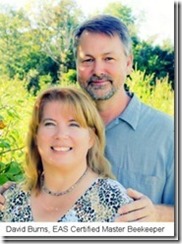
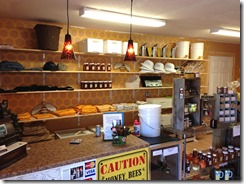
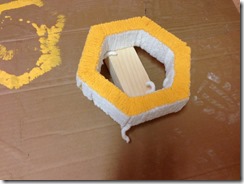

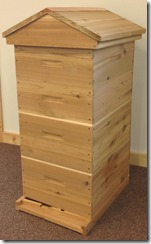


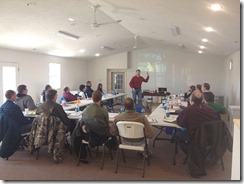
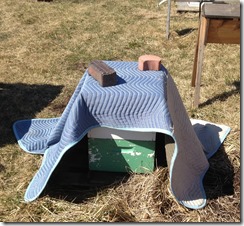





.jpg)





0 comments:
welcome to my blog. please write some comment about this article ^_^